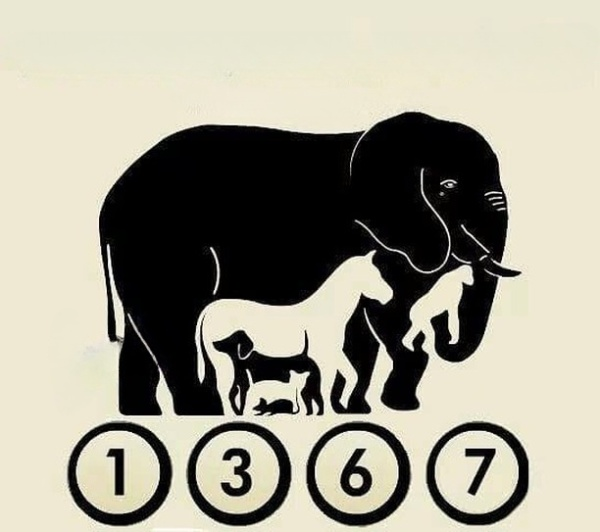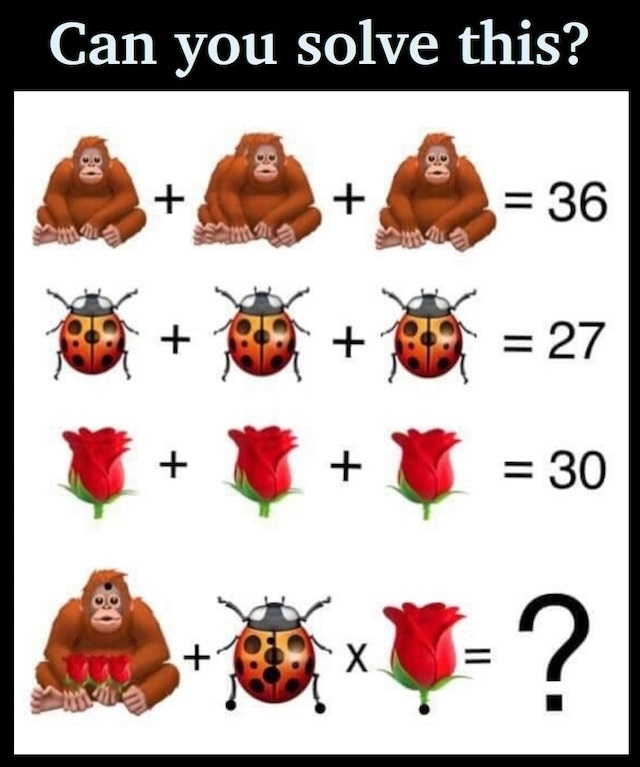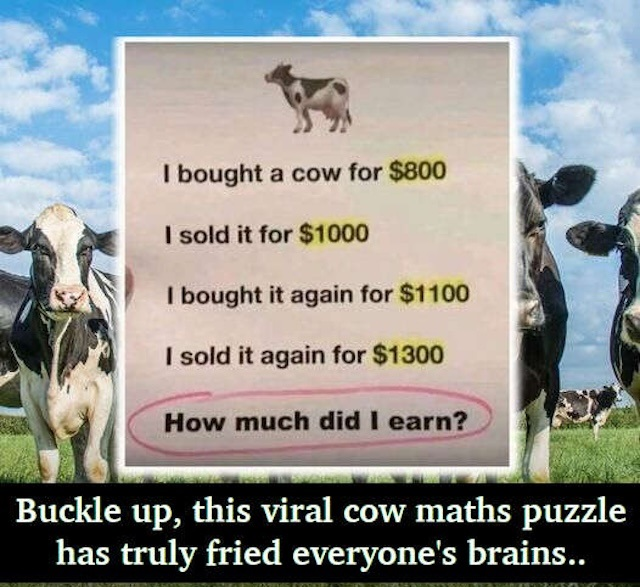How Many Animals Can You Spot? A Fun Visual Puzzle Challenge
Do you enjoy solving brain-teasers that push your observation skills to the limit? Here’s a visual puzzle that’s sure to keep you guessing: How many animals can you spot in this picture? At first glance, it may seem simple, but if you take a closer look, you’ll find some hidden surprises that are easy to miss. Take a moment to study the image carefully and see how many animals you can find. Ready to dive in?

Why Visual Puzzles Are So Deceptive
Visual puzzles have a unique way of challenging our perception, making the obvious seem obscure and the obscure appear obvious. But why exactly are they so difficult to solve? Here are four key reasons why visual puzzles, like the one you are about to solve, are deceptively tricky:
- Jumping to Conclusions: Our brains are wired to quickly recognize familiar shapes and patterns. This instinct can make us stop searching once we think we’ve “seen it all.” In puzzles like this, it’s easy to miss subtle details hidden within the image.
- Focusing on Large Shapes: Large, dominant figures tend to grab our attention first. For instance, in this puzzle, the biggest animal may distract you from the smaller creatures subtly embedded within it.
- Overlooking Subtle Details: Sometimes, the tiniest lines or shadows form hidden shapes. These details are easy to miss unless you’re actively looking for them.
- Overthinking the Puzzle: Some people overanalyze puzzles, imagining animals that aren’t actually there. This leads to inflated guesses that veer away from the intended solution.
Now that we know why visual puzzles can be tricky, let’s break down this specific puzzle and uncover all the hidden animals, step by step.
Step-by-Step Guide: Finding All the Animals
Ready to solve this puzzle? Let’s walk through the steps one by one and uncover every hidden creature in the image.
Step 1: Start with the Most Obvious Animal
The first animal that stands out in the image is the elephant. It’s large, with its signature trunk, ears, and legs. This one is hard to miss, but don’t stop here—there are more animals to find!
Step 2: Check the Trunk for Hidden Shapes
Take a closer look at the elephant’s trunk. Within its curves and shading, you’ll spot the outline of a gorilla. The gorilla’s distinctive head and body are subtly integrated into the design, making it the second animal hidden within the image.
Step 3: Inspect the Elephant’s Body
Now, shift your attention to the elephant’s body. The contours of its belly and legs cleverly form the outline of a horse. If you focus on these shapes, you’ll be able to spot the horse’s head, mane, and legs.
Step 4: Look Beneath the Horse
Right beneath the horse, you’ll find a smaller animal—a dog. Its body is cleverly woven into the larger design, making it easy to overlook unless you’re paying close attention.
Step 5: Find the Cat
Next, hidden below the dog is a small cat. This animal is quite subtle, so you’ll need sharp observation to spot it. But it’s definitely there, nestled just beneath the dog.
Step 6: The Tiniest Animal of All
Finally, look carefully beneath the cat, and you’ll discover a tiny mouse. This is the smallest creature in the image, and it’s often the hardest to spot, but with a little patience, you’ll find it hiding in plain sight.
Final Count: Six Animals
Let’s recap all the animals that you should have found:
- Elephant: The largest and most obvious animal.
- Gorilla: Hidden within the elephant’s trunk.
- Horse: Formed by the elephant’s belly and legs.
- Dog: Positioned beneath the horse.
- Cat: Found below the dog.
- Mouse: The tiniest creature, located under the cat.
Congratulations if you found all six animals! You’ve got an excellent eye for detail. If not, don’t worry—this is a great opportunity to hone your observation skills for the next challenge.

Why Solving Puzzles Is Good for Your Brain
Solving visual puzzles is not only fun, but it’s also a fantastic workout for your brain. Here are some of the benefits you gain from regularly engaging with puzzles:
- Enhances Observation Skills: Puzzles train you to notice subtle details you might otherwise miss. This heightened attention to detail is a valuable skill in many areas of life.
- Boosts Logical Thinking: Breaking down a puzzle step-by-step strengthens your problem-solving abilities. It helps you to think logically and systematically, a skill that’s useful in both everyday tasks and complex challenges.
- Develops Patience: Finding hidden elements in a puzzle requires persistence. By practicing patience, you can improve your focus and determination in other areas of your life as well.
- Stimulates Creativity: Puzzles often require you to think outside the box and come up with creative solutions. This boosts your ability to tackle problems in innovative ways.
The more you practice solving puzzles, the sharper your mind becomes, enabling you to solve even more complex challenges with ease.
Let’s Hear Your Thoughts!
Now that you know the answer, how did you do? Did you manage to spot all six animals, or did a few sneak past you? We’d love to hear about your experience with this puzzle! Feel free to share your final count in the comments below.
Better yet, challenge your friends and family to see how many animals they can find. It’s always fun to compare answers and see who has the sharpest eye. Who knows, maybe they’ll spot some hidden creatures that you missed!
Conclusion: Keep Challenging Your Mind
This puzzle may seem simple at first glance, but it perfectly demonstrates how much complexity can be hidden in plain sight. By taking the time to analyze every detail carefully, you not only solve puzzles but also enhance your observation and reasoning skills. These are valuable tools that can benefit you in both puzzles and daily life.
Feeling inspired? Dive into more puzzles and brain-teasers to keep your mind sharp. The more you practice, the better you’ll get at solving even the trickiest challenges.
Thanks for taking the time to solve this puzzle with us—keep challenging yourself and see what else you can uncover!
Share this content:









Post Comment